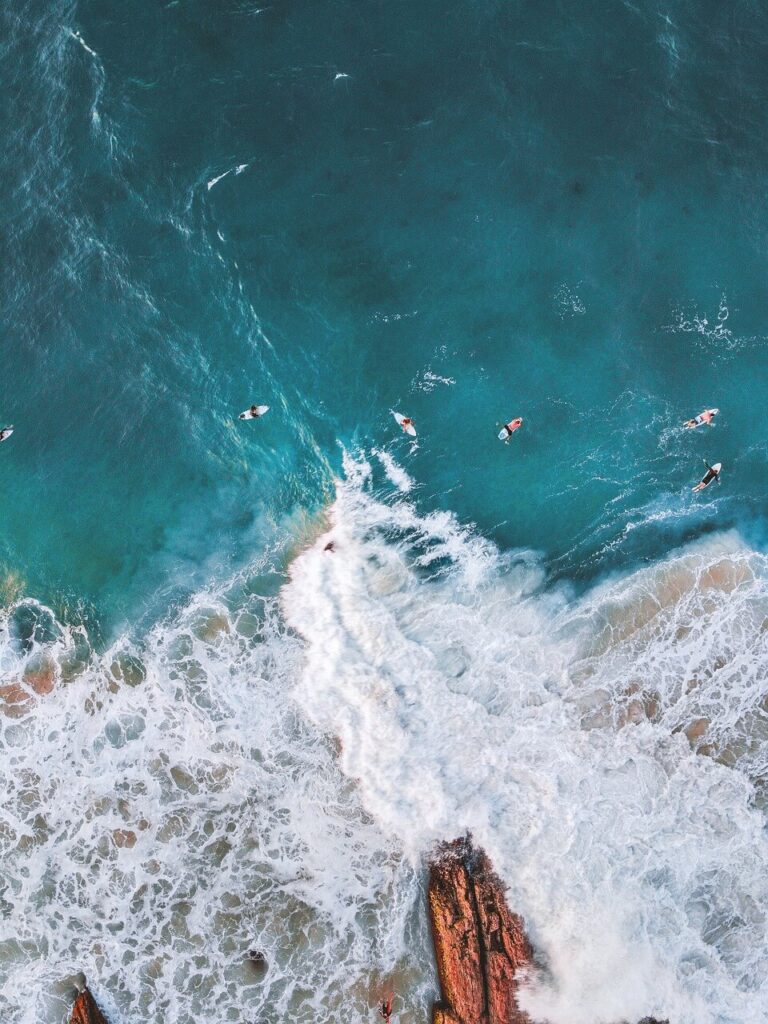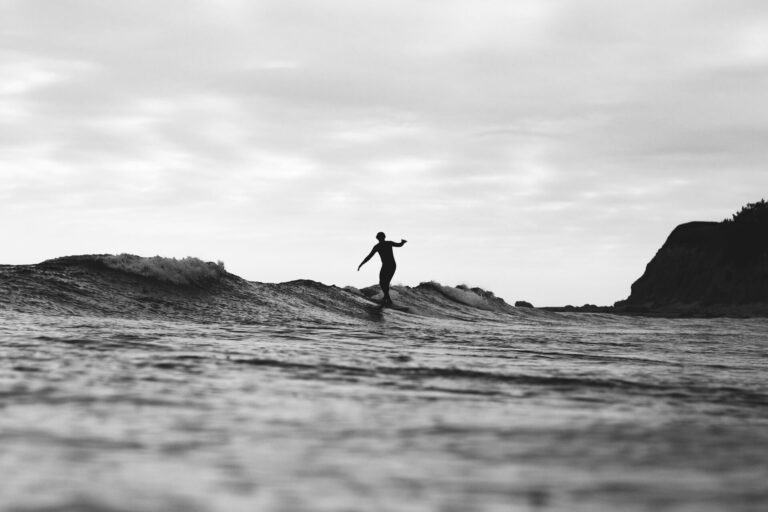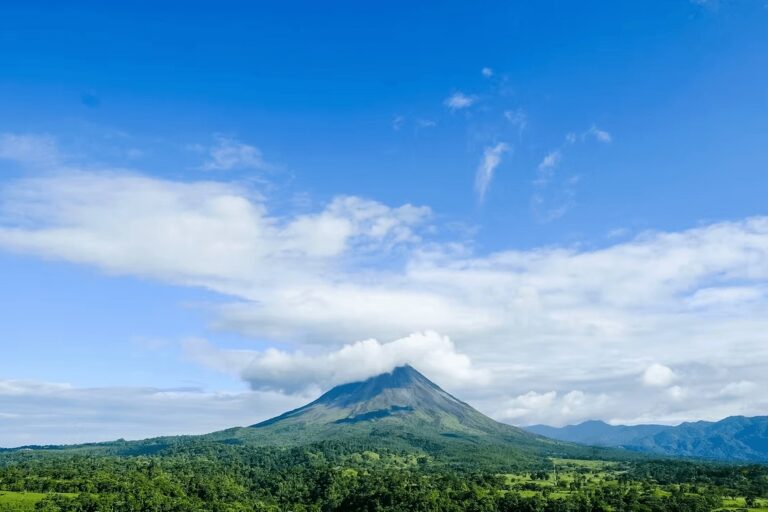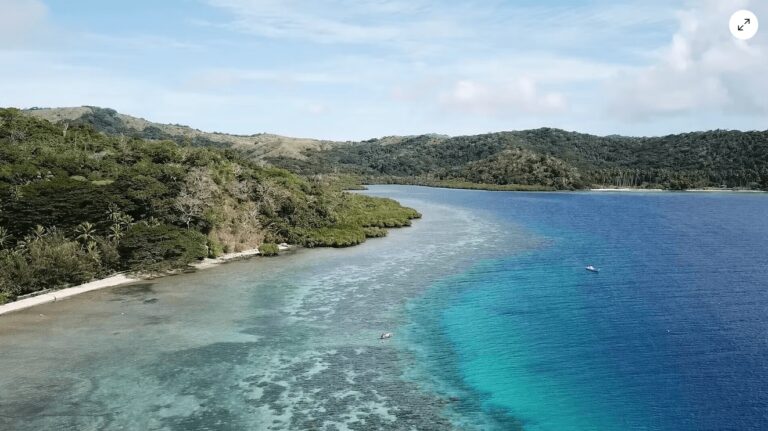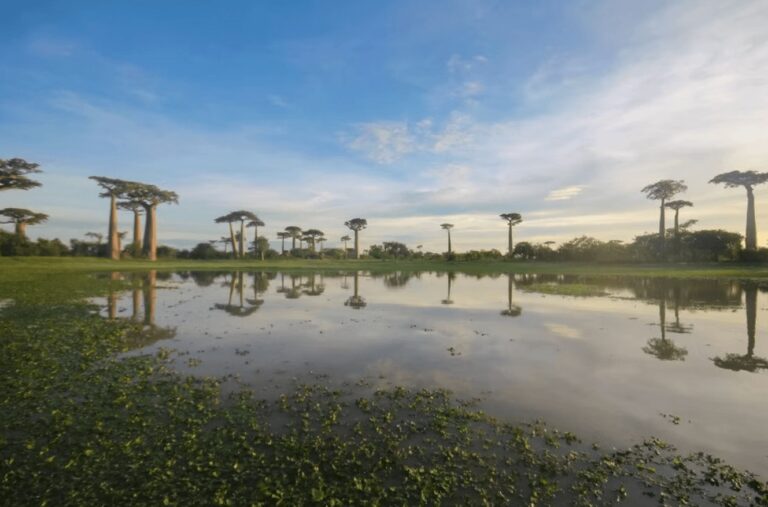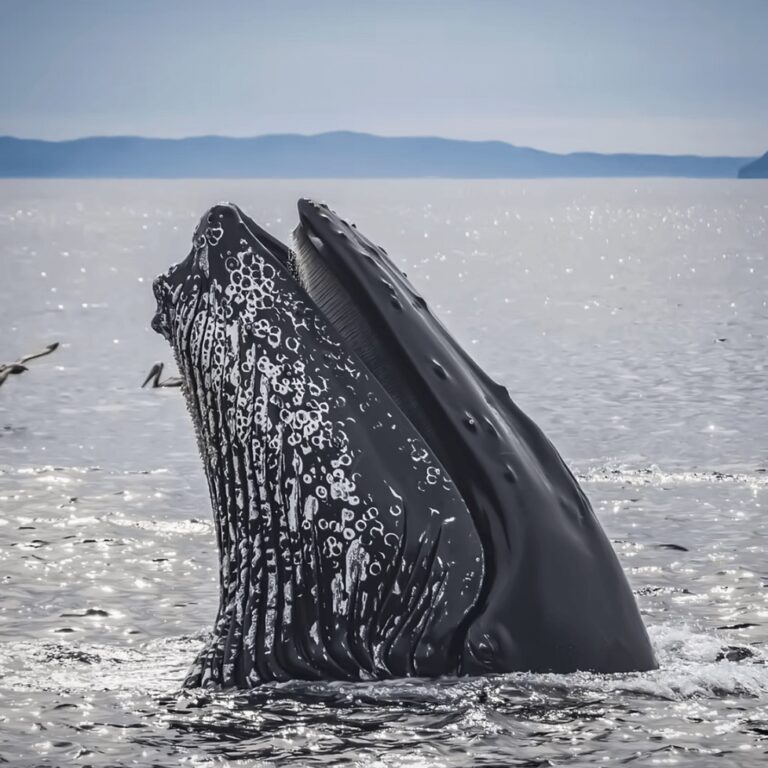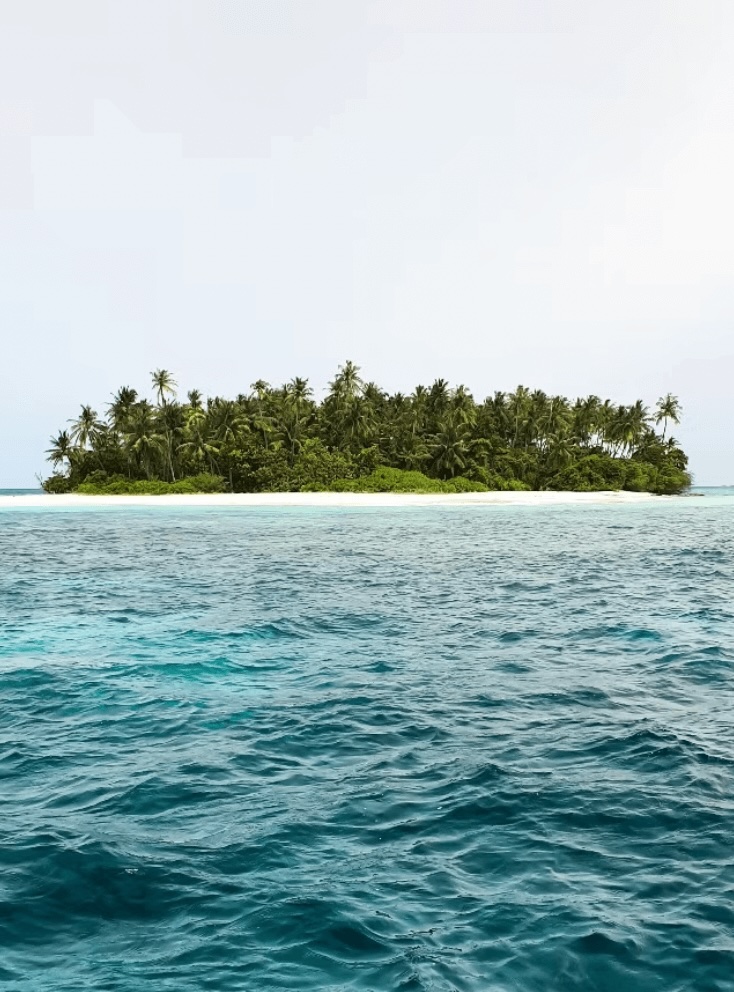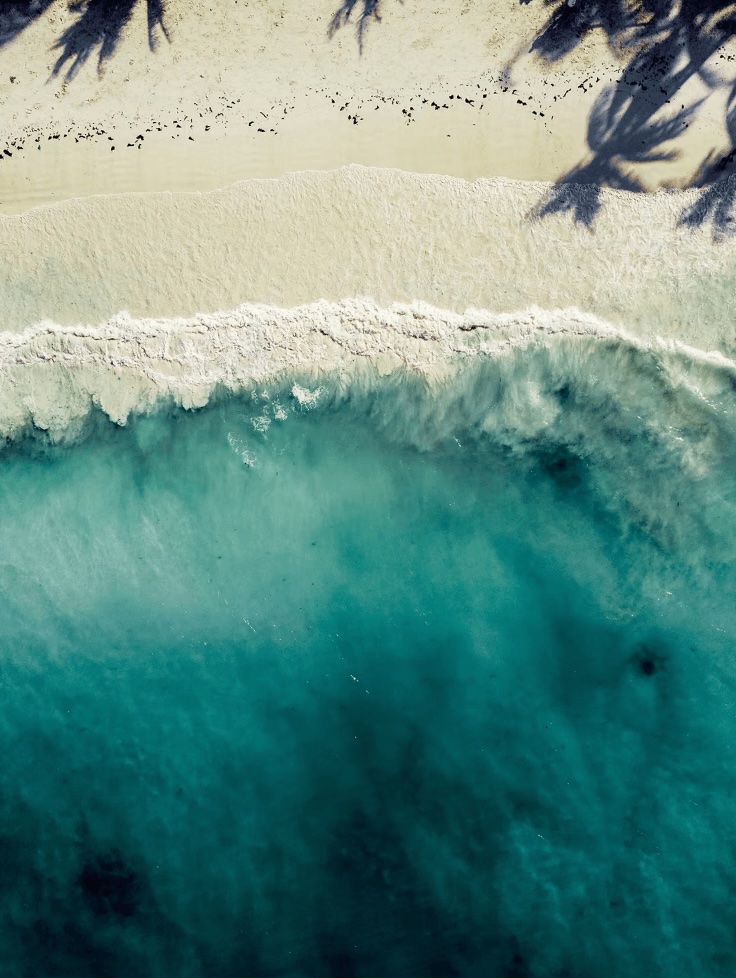Surfing in Senegal: Best surf spots + eco-friendly places to stay
Planning a surf trip to West Africa? Discover everything you need to know about surfing in Senegal, including the best surf spots and eco-friendly hotels for a sustainable stay.
From the moment you set foot in Senegal, you know you’ve arrived somewhere special. It shares the same coastline as Morocco (further north), but the waves here are comparably uncrowded.
The lingering influences of French colonialism are evident in the architecture, language and traditions of this modern West African nation.
Despite this, Senegal remains distinctly and unapologetically African. It proudly embraces its own heritage through music, dance and an energy that is infectious to all who experience it.
For surfers, there’s an added allure – uncrowded breaks that are within easy reach of the lively capital, Dakar.
In total, there are around 20 surf spots surrounding the Cap-Vert peninsula (the westernmost point on the African continent), including beach, point and reef breaks. It really is an African surf paradise!
Due to the accessibility of the breaks and their close proximity to the cultural attractions of the Senegalese capital, it’s easy to experience a lot beyond the waves themselves.
In this guide to surfing in Senegal, we’ll highlight the best breaks around Dakar and eco-friendly places for surfers to stay. We’ll also share some of the best things to do in the area (from safaris to culturally immersive day trips) when you’re ready for (or forced to have) some time away from the waves.
Looking for the best places to surf in Africa? Check out our detailed guides to South Africa, Mozambique, Ghana and Morocco.
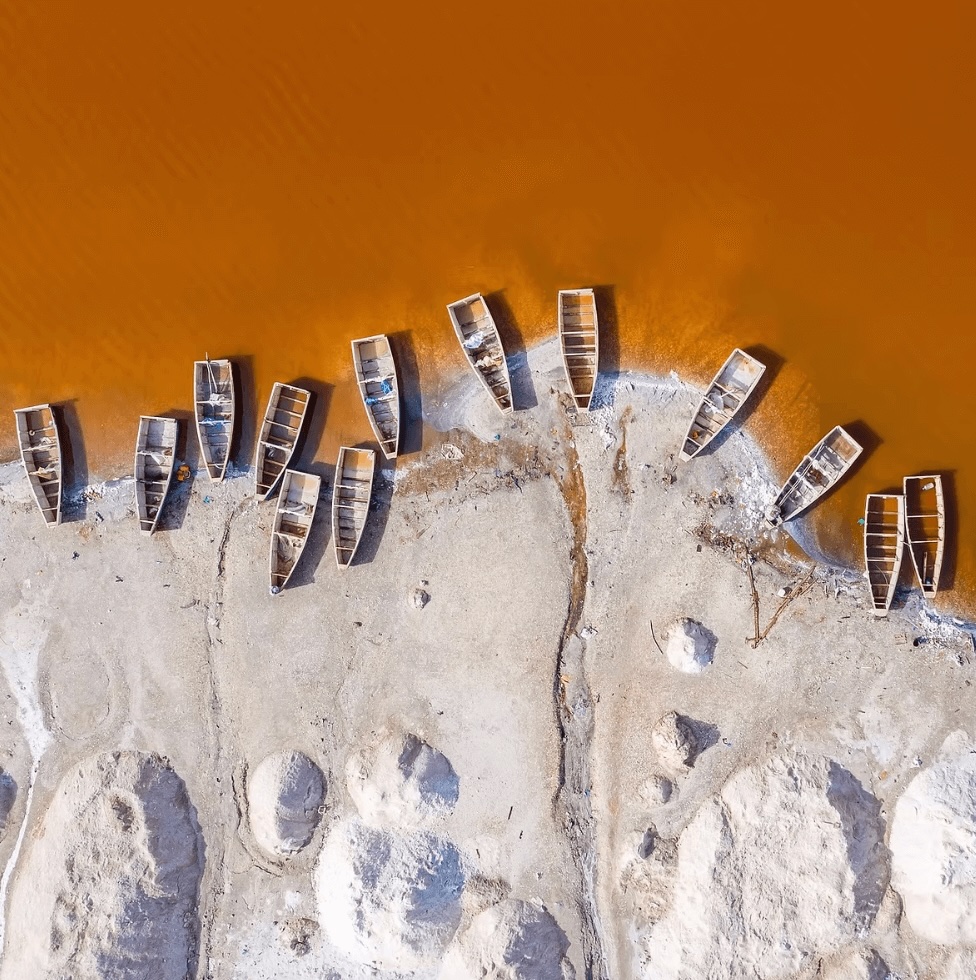
This article contains affiliate links, which means when you make a purchase through that link, we earn a small commission. Affiliate links come at no cost to you and ensure our content remains free!
N’gor
Located on the northern side of the Cap-Vert peninsula, N’gor is undoubtedly the most well-known surfing destination in Senegal. It was here in the 1960s that the legendary surf filmmaker Bruce Brown captured “The Endless Summer,” showcasing the island’s world-class waves to a global audience.
Since then, surfing in Senegal has grown exponentially in popularity. But the local charm and welcoming spirit of the people remain unchanged.
While N’gor now hosts more surfers than in the past, the chances of scoring a solo session are still quite high. The island boasts two distinct waves – a powerful right-hander on one side and a mellower left-hander that needs light offshore breezes to really shine.
Booties are highly recommended due to the presence of urchins, though the entry and exit points are generally manageable.
Around N’gor, surfers have a few other options, such as the “Baie de Carpes” with its fun A-frame peak.
For those seeking a more forgiving wave, the consistent beach break at Yoff may be a better bet, though it caters more to learners than experienced surfers.
Almadie
Hugging the westernmost point of the Cap-Vert peninsula is Almadie, a welcoming neighbourhood that offers an immersive insight into local life.
Once in the area, surfers have a few spots to choose from, the most popular of which is Club Med, a powerful right-hander that can pack a punch. The shifting takeoff zone requires some local knowledge and depending on the tide, you can also explore different sections.
Another popular surf spot in Almadie is a break known as “Secrets.” Despite being one of the least powerful waves in the area, it’s often busy due to its user-friendly nature.
Just down the coast is Vivier, offering both left and right-hand peaks that work best on different tides. The right-hander offers the best chance of getting barrelled, but it can get crowded quickly.
We recommend timing your sessions during the week when there is good swell, catching it early in the morning or when most other surfers have departed for the day.
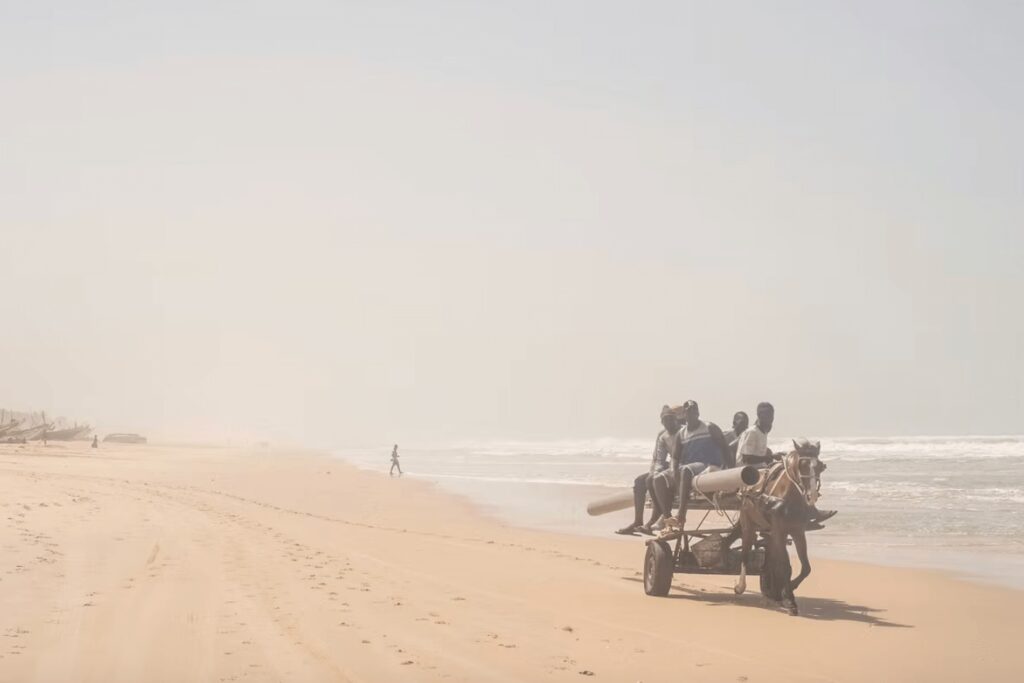
Ouakam
Further down the coast is the commune of Ouakam, which is picturesque due to its cliffside setting and domed mosque. From the streets above, you can gaze down upon the reef that creates Ouakam’s legendary A-frame waves.
The left-hand break is best suited for a lower tide, providing a friendly, albeit slow and mellow ride. That being said, you still need to be vigilant of the rocks and sea urchins lurking just beneath the surface.
The right-hand wave, on the other hand, requires a solid swell to activate. When it does, it transforms into a (sometimes) barrelling beast. Timing the tide is crucial when paddling out – get it right and you’ll be rewarded with some of the best waves of your Senegalese surf trip.
Beyond its waves, Ouakam is a fishing-centric community, where locals sell their daily catch right off the boats. Combined with the quintessentially Senegalese urban scenery, it’s a must-visit destination for soaking up the local culture.
Le Virage
On the opposite side of the Cap-Vert peninsula is Le Virage, a must-visit destination that’s ideal for beginner surfers and experienced longboarders alike. This beach break has long, consistent right-hander waves, plus a vibrant Senegalese beach culture that’s all part of the experience.
Thatched-roof umbrellas and sun loungers dot the sand. Meanwhile, the zero-waste restaurant at the Copacabana Surf Village serves up local cuisine in an eco-friendly setting. There are no plastic straws or single-use plastic bottles here and all of the leftover food is composted.
Boards can also be rented at the Copacabana Surf Village and lessons are available with their experienced guides. It’s an amazing sustainable project to support and, in our opinion, worth the visit to Le Virage alone.
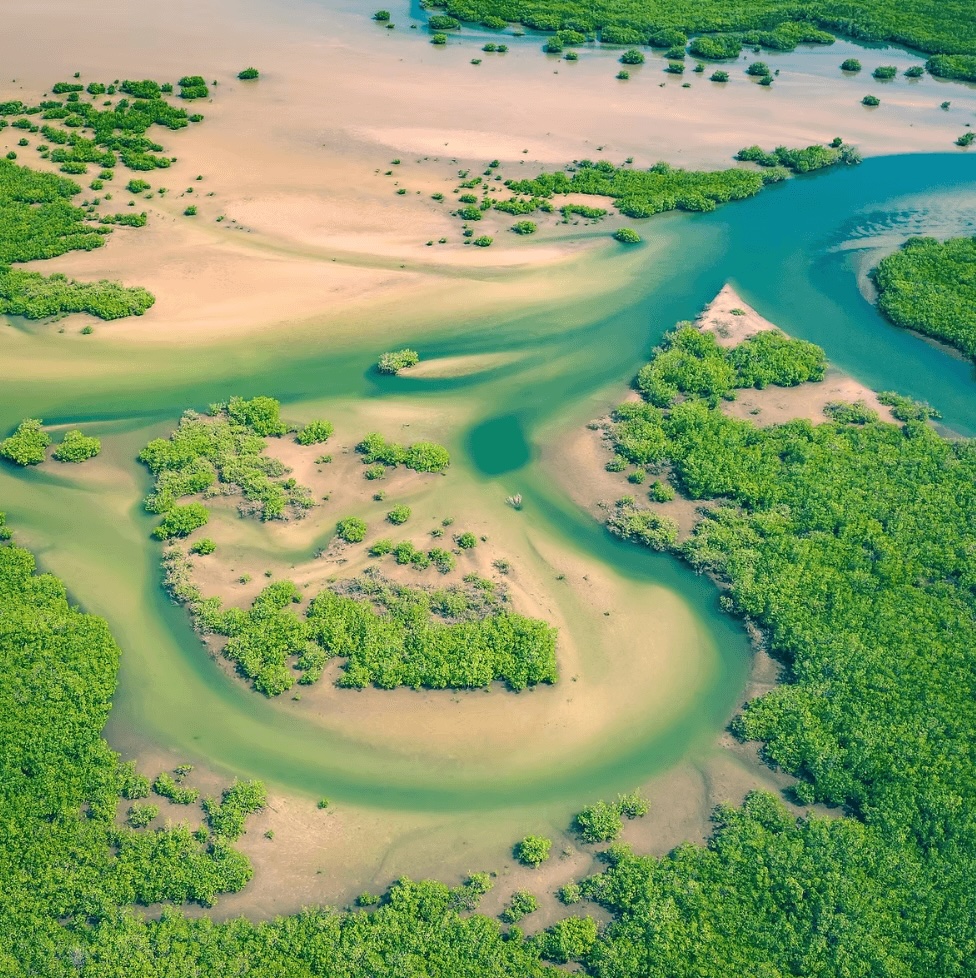
Eco-friendly hotels in Dakar for a sustainable surf vacation in Senegal
BOMA Lifestyle Hotel
Best eco-friendly hotel in Dakar
Located partway between N’gor and Le Virage, this boutique Dakar hotel features a handful of breezy rooms centred around a sparkling swimming pool.
Yoga classes and massages are available at the onsite wellness centre. Meanwhile, the restaurant-bar hosts live music on select nights.
“Lush boutique hotel oasis in the heart of Dakar.” – Birgit (read more reviews here)

Nyeleni Maison Sahel
Best bed and breakfast in Dakar
Occupying a traditionally styled building near Yoff, this friendly Dakar bed and breakfast features single and double rooms, some with balconies.
Aside from the super comfortable beds, there’s an outdoor swimming pool where you can laze in between surfs. Breakfasts are served in the sunny patio.
“Perfect hotel for Dakar.” – Mitchell (read more reviews here)
La Résidence
Best boutique hotel in Dakar for a luxury stay
In the heart of Almadie, this luxury Dakar hotel features beautifully appointed rooms and suites overlooking a garden.
There’s a large swimming pool and several lounge areas (both indoor and outdoor) where you can kick back with a good book. Plus, the staff are really helpful and can assist with restaurant recommendations and transport bookings.
“As good as it gets!” (read more reviews here)

Lighthouse Signature Suites
Best holiday apartment in Dakar for groups
With three spacious bedrooms and a well-equipped kitchen, this modern holiday apartment in Dakar is ideal for groups of surfers.
It’s located just a stone’s throw from the waves of Ouakam and has a super responsive team who’ll help with everything you need.
“Absolutely amazing place in the centre of Dakar.” – Irina (read more reviews here)
Best time to surf in Senegal
The best Senegal surfing season runs from October through April. This is when the region is blessed with consistent, powerful N/NW swells originating from low-pressure systems in the North Atlantic Ocean.
It’s an ideal time to experience Senegal’s breaks, as the subtropical climate provides near-perfect conditions. You can expect dry, warm and sunny days that are tempered by refreshing evening breezes.
Daytime air temperatures typically range between 24 and 28°C, though the ocean can be quite chilly. Water temps generally fluctuate between 17 and 24°C – bring a 3/2mm wetsuit.
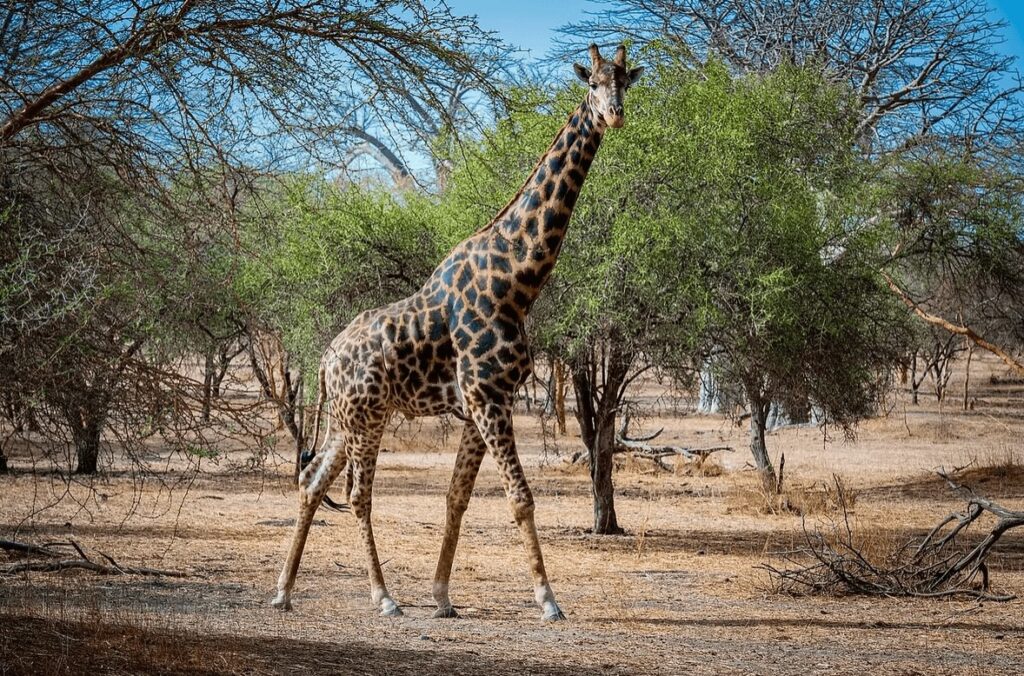
Best things to do in Dakar (away from the waves)
One of the biggest draws of a Senegalese surf adventure is the accessibility of its waves. This makes it easy to combine time in the water with a diverse range of cultural and natural experiences.
To help inspire you, here are some of the top things to do in Dakar, whether you want to get up close to African wildlife or discover the region’s slave trade past.
Discover the UNESCO-listed island of Goree
Located just off the coast of Dakar, Goree is a small, car-free island that played a pivotal role in the Atlantic slave trade.
Among its colonial-era buildings is the House of Slaves. Now a sobering museum, it stands as a poignant reminder of the untold suffering endured by those who were trafficked through this notorious hub.
The 19th-century Fort d’Estrées now houses the IFAN Historical Museum, which offers a comprehensive insight into Senegal’s cultural heritage. Meanwhile, the Henriette Bathily Women’s Museum shines a spotlight on the contributions and enduring influence of West African women.
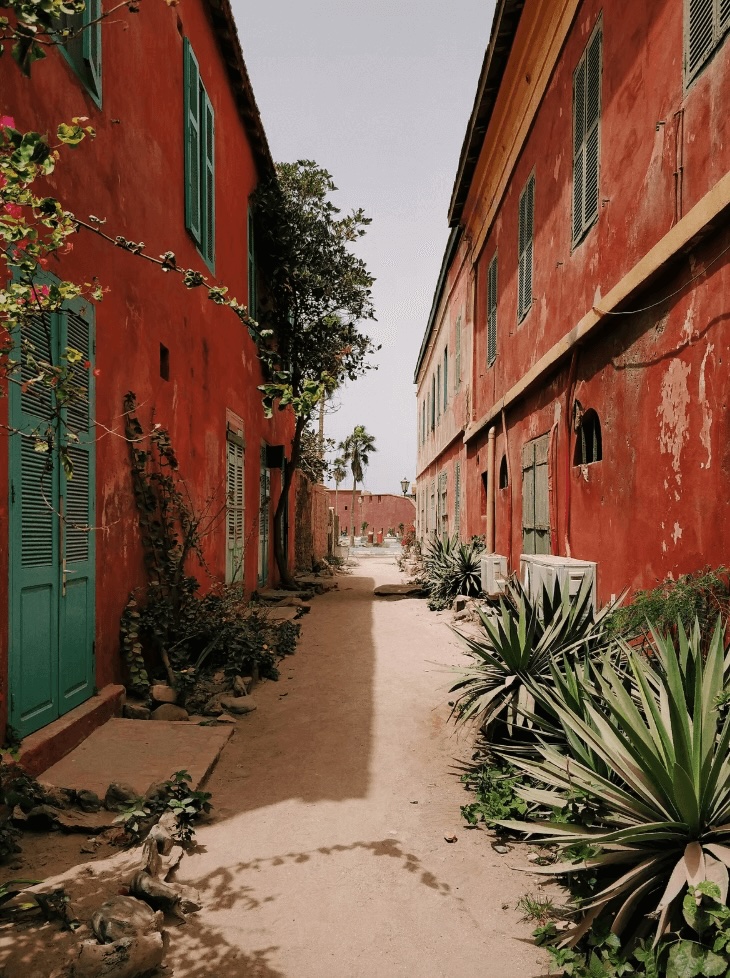
Visit the African Resistance Monument
Perched atop the Mamelles (the two distinctive hills that jut out from the western edge of Dakar) sits a pair of landmarks.
On one of the hills stands a historic lighthouse, built in 1864 and now transformed into a stylish restaurant and bar. It provides panoramic views across the capital and the Atlantic Ocean beyond.
On the other is the 49-metre-tall African Renaissance Monument, a sculpted figure of a man, woman and child reaching toward the horizon.
If you’re willing to make the climb up to Africa’s tallest sculpture, the rewards are immense. You can expect sweeping, 360-degree views stretching across the entire Cap-Vert Peninsula.
This full-day guided tour of Dakar includes a visit to the African Resistance Monument, as well as market explorations and a trip to the UNESCO-listed island of Goree.
Float on the pink waters of Lake Retba
Situated just 29 kilometres northeast of Dakar is this shallow salt lake. It’s renowned for its vibrant hues that range from a delicate blush to a brilliant fuchsia.
The lake’s pink colouration is the result of a high concentration of salt. In fact, the salinity levels in Lac Rose can reach as high as 40%, making it even saltier than the famously buoyant Dead Sea.
Aside from giving the water an almost otherworldly appearance, this exceptionally high salt content means you can effortlessly float on the surface like a human buoy. If you don’t want to swim, you can ride a camel or a quadbike along one of the lake’s sandy beaches.
Taking place across two days (and returning to your Dakar accommodation of choice each night), this highly-rated guided experience includes a safari in the Bandia Wildlife Reserve and a visit to Lake Retba, as well as a boat trip to the car-free island of Goree.
Discover Dakar’s art scene
Dakar is a thriving cultural hub that offers a wealth of opportunities for art enthusiasts. The city is home to several absorbing museums and abstract galleries that provide fascinating insights into the artistic traditions of the African continent.
The IFAN Museum of African Arts, located in the downtown Plateau area, has an impressive collection of traditional sculptures, masks and textiles from Africa’s many indigenous cultures.
Just a stone’s throw away, the Galerie Arte showcases modern and abstract works by both established and up-and-coming Senegalese and African artists.
For those who prefer to experience “live art,” the Village des Arts is a creative oasis. Here, artists can be found working on their craft and exhibiting their works directly to the public.
Go on safari in the Bandia Wildlife Reserve
Sprawling across 3,500 fenced-in hectares, this wildlife reserve has succeeded in reintroducing some of Africa’s most beloved animal species. Many had disappeared over the centuries due to demographic pressures and widespread poaching.
Situated just 65 kilometres from Dakar, Bandia can easily be visited as a day trip. It offers up-close encounters with giraffes, rhinos, buffaloes and crocodiles.
You can explore the reserve’s rugged terrain in private vehicles, four-wheel drives or one of Bandia’s specially equipped safari trucks, although an organised tour from Dakar is the most convenient way of getting there.
In the drier months, nature enthusiasts can venture out on guided rambles through the dry riverbed of the Somone River, surrounded by Senegal’s majestic mahogany trees.
This half-day trip from Dakar takes in the Bandia Wildlife Reserve and the Somone Lagoon, plus it includes a delicious Senegalese lunch.
FAQs about surfing in Senegal
Does Senegal have good surfing?
Despite having a relatively short coastline (at just over 500 kilometres), Senegal boasts some of the best surf in West Africa.
Dotting the Cap-Vert peninsula, the westernmost point of the African continent, are around 20 distinct surf spots. From picturesque beach breaks to challenging point breaks and powerful reef breaks, there is something for everyone.
What makes surfing in Senegal so special, however, is the accessibility of the waves and their close proximity to the cultural attractions of Dakar. Surfers can easily immerse themselves in the local life of the capital, with its bustling markets, historic landmarks and legendary live music, before returning to the ocean each day.
Can you surf in Dakar?
Most of Senegal’s best surf spots are concentrated in and around the capital city of Dakar. In fact, many of the breaks are within easy walking distance of each other.
The epicentre of Senegalese surfing is the Cap-Vert Peninsula, which juts out into the Atlantic Ocean as the westernmost point of the African continent. It’s here that you’ll find spots such as Vivier, Secret Spot and Club Med, as well as Ouakam and N’gor.
How much experience do you need to surf in Senegal?
Senegal’s surf breaks cater to a wide range of skill levels, whether you’re a complete beginner or a seasoned pro.
If you’re new to surfing, head north of Dakar to the beaches of Yoff and Virage, two mellow beach breaks that are well-suited for surfers still honing their skills.
Those with a little more experience can take their surfing to the next level at Yoff or Secrets before stepping it up on the A-frame at N’gor.
On a solid swell, experienced surfers should make a bee-line for Ouakam, which can unleash fast, barrelling rides when the conditions align.
When is the surf season in Senegal?
The best time for surfing in Senegal is from October to April when the area is subjected to strong swells generated by low-pressure systems in the North Atlantic. These favourable surfing conditions are complemented by a subtropical climate that features dry, warm and sunny days, along with pleasant evening breezes.
Daytime temperatures usually hover around 24 to 28°C. But be prepared for cooler ocean temperatures ranging from 17 to 24°C. A 3/2mm wetsuit is recommended for surfing in Senegal.
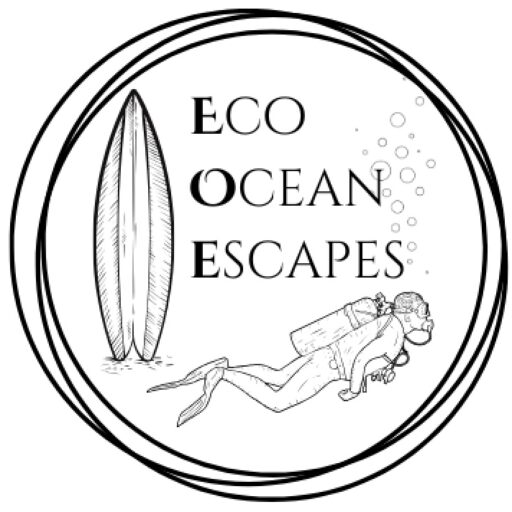
PLAN YOUR TRIP WITH OUR FAVOURITE RESOURCES:
Find hotels and resorts via Booking or Agoda
Book tours and experiences via Viator or GetYourGuide
Find a rental car via Discover Cars
Book flights via Kiwi or Booking
Search for buses and trains via 12Go or Omio
Get travel insurance via SafetyWing
Buy a digital eSIM with Airalo
By purchasing through our links, you’ll be supporting our website at no additional cost to you
About the authors
We are a team of passionate divers and surfers with decades of combined experience in the water and travelling to all corners of the globe. After years of chasing waves and descending into the deep blue, we’ve created this resource to highlight sustainably run surf camps, eco-friendly dive resorts and conservation-focused ocean trips to help inspire your next adventure.
Eco Ocean Escapes was born out of a love of the ocean, an obsession with travel and a concern about the impacts of our adventures on the environments we explore. Despite the benefits that surf and dive tourism can bring to local communities, we recognised that ocean-based adventures are not always managed in a sustainable manner.
Through our articles, we hope to inspire those seeking a responsible surf or dive trip that is all about supporting local communities, preserving our coastal environments and the incredible marine species that inhabit our oceans.
-
Sustainable Surf Tourism and Respecting Local Communities
Surf tourism has exploded over the last two decades. With travel becoming more accessible and social media exposing hidden spots, once-remote breaks in Indonesia, Central America, Morocco and the Pacific Islands are now iconic stops on global surf circuits. While surf travel brings income, jobs and global attention to coastal towns, it can also disrupt…
-
Inspiring Citizen Science Projects for Surfers + How to Get Involved
As surfers, we are intimately connected to the ocean – its rhythms, its wildlife and its health. Because of this relationship, many of us are looking for meaningful ways to protect the marine environments we love. One of the simplest and most impactful ways we can do this is by joining citizen science projects. These…
-
Understanding Marine Protected Areas (MPAs): Why divers should care
If you’ve spent time underwater (as a diver or snorkeller), you’ve probably noticed something: not all sites are beacons of health. Some reefs appear vibrant and full of life, while others show signs of stress – broken coral, few fish or algae-covered rocks. One of the biggest factors shaping the health of our oceans is…
-
Costa Rica: Best Marine Parks for Scuba Divers + Eco Dive Resorts
Costa Rica is a paradise for eco-conscious travellers and underwater explorers are no exception. With its healthy coral reefs, pelagic-rich waters and some of the most progressive environmental policies in the world, the country is a dream destination for those who want to dive responsibly. We’ve been lucky enough to visit Costa Rica several times…
-
Eco-Diving: Best Destinations for Sustainable Scuba Travel
As humans inspired by the underwater world, there is plenty of incentive to protect our coral reefs. Here at EcoOceanEscapes, we want to do our bit to save endangered marine species and keep our oceans free of trash. One impactful action we can all take is to choose sustainable diving destinations. These are nations (or…
-
Eco-Friendly Diving: How to Be a Sustainable Scuba Advocate
Understand the environmental impacts of diving and sustainable scuba practices in this comprehensive guide to eco-friendly diving. Any diver will tell you that being underwater is an incredible experience. It’s a world that not everyone has the opportunity to explore and the encounters we have with marine creatures can be life-changing. Watching manta rays soar…

We are a team of passionate divers and surfers with decades of combined experience in the water and travelling to all corners of the globe.
After years of chasing waves and descending into the deep blue, we’ve created this resource to highlight sustainable surf camps, eco-dive resorts and conservation-focused ocean trips to help inspire your next adventure.
Eco Ocean Escapes was born out of a love of the ocean, an obsession with travel and a concern about the impacts of our adventures on the environments we explore.
